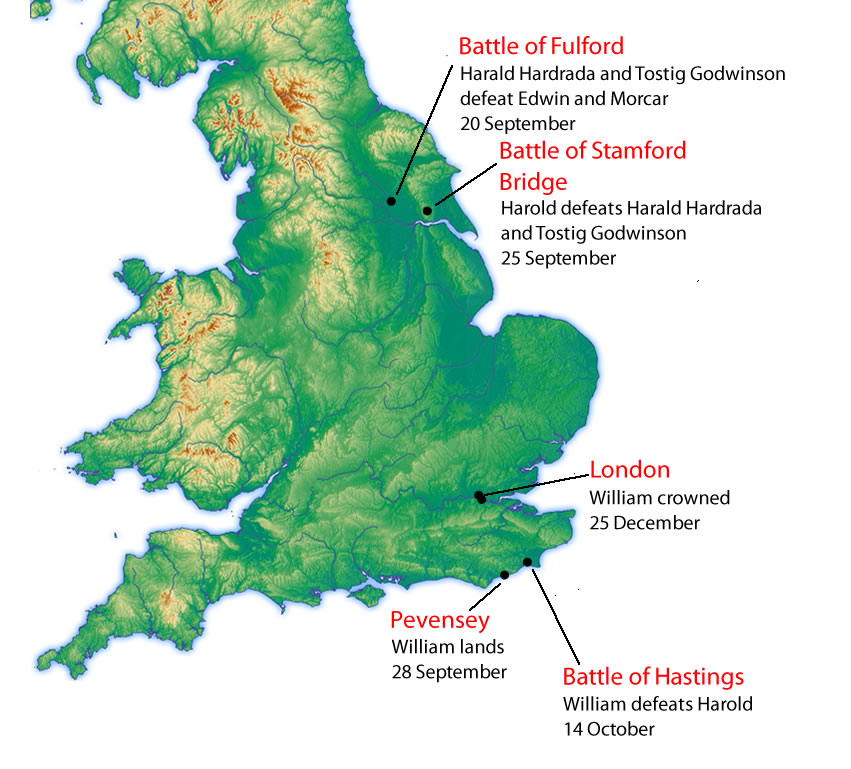William I
The Norman Conquest
Battle of Stamford Bridge
Harold was aware of the preparations being made by William but there was no way of knowing exactly when or where the attack would take place. Many of William’s closest advisors said that an attempted conquest of England would be too risky but he brushed their doubts aside. There was much diplomatic activity, to ensure his duchy would be safe from attack whilst William and his most trusted men were absent.

Early in September Harold had to disband the force that had been sent to guard the south coast. Soon after this Harold of Norway swooped down on the Yorkshire coast with a large army. He defeated the northern earls and militia at Fulford, which is close to York. After an amazing forced march, Harold and his army destroyed the Norwegians during a battle fought at Stamford Bridge on 25 September. Amongst the dead were Harold Hardrada, King of Norway, and Tostig, a brother of Harold of England who had gone over to the Vikings
Change in the weather
Throughout the late summer of 1066 the wind was in the wrong direction for ships to set sail. As bad luck (for Harold) would have it, on 27 September the wind direction changed. William eventually managed to land most of his army at Pevensey on the south coast of England. The Normans, Bretons, Flemings and others spent some time burning and pillaging the area around where they had landed. On hearing of the invasion of Duke William, Harold had no option but to order a forced march down to the south coast. Men had been lost at Stamford Bridge but more conscripts would be added as the army marched south.

